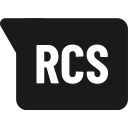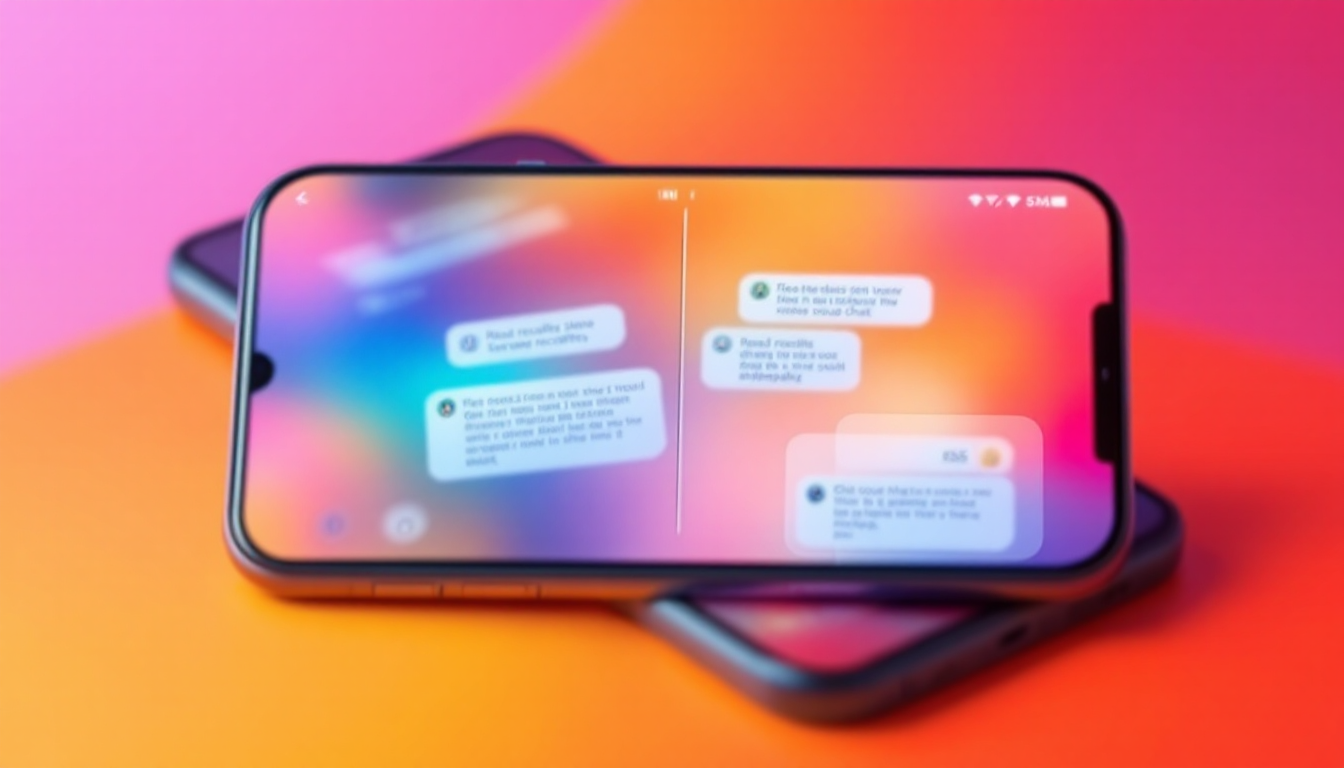In the highly competitive landscape of digital communication, businesses are constantly exploring ways to connect effectively with their audiences. Two prominent messaging channels, RCS (Rich Communication Services) and SMS (Short Message Service), offer distinct opportunities and challenges in driving engagement. This article delves into their unique features, technical differences, roles in business communication, engagement metrics, future prospects, and what businesses need to consider when choosing between them.
Understanding the Basics of RCS and SMS
Before diving into comparisons, it’s essential to understand what RCS and SMS are. Each offers unique attributes that can significantly impact communication strategies.
What is RCS?
RCS is a protocol that enhances traditional SMS messages by allowing richer media types and interactivity. It enables brands to send messages that can include images, video, buttons, and carousels, creating a more engaging experience for users. RCS uses the internet as its transport layer, which facilitates the integration of different features and applications.
This robust format allows businesses to build a distinctive brand identity through personalized messages, leading to enhanced customer engagement. Users can reply directly to messages, view updates in real-time, and even access customer support through interactive elements, providing a seamless communication channel.
Moreover, RCS supports features such as read receipts and typing indicators, which can enhance the user experience by providing feedback on message delivery and engagement. This level of interaction not only fosters a more personal connection between brands and consumers but also allows businesses to gather valuable analytics on user behavior and preferences. As a result, RCS is increasingly being adopted by companies looking to improve their customer relationship management and drive conversions through more effective communication strategies.
What is SMS?
SMS, or Short Message Service, has been around since the 1980s, allowing users to send text messages up to 160 characters. Its simplicity and reliability have cemented its place as a fundamental part of mobile communication worldwide. SMS operates over cellular networks, making it universally accessible without requiring an internet connection.
While SMS may lack the dynamism of RCS, it remains a powerful tool for quick, direct communication, such as alerts, reminders, and promotional messages. Its familiarity and ease of use make it a popular choice among businesses and consumers alike.
Additionally, SMS is often viewed as a more secure method of communication, as it does not rely on internet connectivity, which can be susceptible to various security threats. This reliability is particularly crucial for time-sensitive messages, such as two-factor authentication codes or emergency alerts. Furthermore, SMS has a broader reach, as it can be sent to any mobile device, regardless of whether the user has access to data services. This makes it an invaluable tool for businesses aiming to reach a diverse audience, including those in areas with limited internet access.
The Technical Differences Between RCS and SMS
The fundamental distinctions in how RCS and SMS operate can influence their effectiveness in various scenarios. Understanding these technical differences can help businesses make informed decisions about which channel to leverage for specific campaigns.
Message Length and Media Support
One of the most significant differences is the length of the messages and the types of media supported. SMS is limited to 160 characters for text, while RCS allows for much longer messages, which can incorporate rich media formats such as images, audio, and video.
This flexibility enables brands to tell more engaging stories and enhance marketing efforts. For instance, while an SMS can only convey a brief text reminder, an RCS message can showcase product images and direct links, increasing the chance of user interaction. The ability to include interactive elements such as carousels or quick reply buttons further elevates the user experience, making it easier for customers to engage with content without leaving the messaging app. This interactivity not only captures attention but also encourages immediate responses, which can be pivotal in time-sensitive promotions or customer service inquiries.
Delivery Reports and Read Receipts
Delivery status is another critical area where RCS outshines SMS. RCS provides detailed delivery reports and read receipts, allowing businesses to verify whether their messages have been delivered and opened. This level of insight is crucial for marketers who need to refine their strategies based on user engagement.
In contrast, SMS typically offers basic delivery confirmation but lacks the capability to inform senders whether the message has been read. Thus, RCS presents a more data-driven approach for businesses focused on understanding customer interactions. Additionally, the analytics provided by RCS can help businesses segment their audience more effectively, tailoring messages based on user behavior and preferences. This targeted approach can lead to higher conversion rates, as businesses can craft personalized experiences that resonate with their audience, ultimately fostering stronger customer relationships and loyalty.
The Role of RCS and SMS in Business Communication
Both RCS and SMS play pivotal roles in business communications. Each channel can serve different purposes depending on the goals of the business and the preferences of the customer.
SMS in Business Communication
SMS is widely recognized for its straightforwardness and efficiency. It’s often used for sending transactional notifications, such as order confirmations, shipping updates, and appointment reminders. Businesses appreciate SMS for its high deliverability rate and the immediate nature of text messages, making it an effective channel for urgent communications.
Additionally, SMS is an excellent option for time-sensitive promotions and flash sales, where quick engagement is crucial. Its reliability ensures that messages are received promptly, enhancing customer trust. The simplicity of SMS allows businesses to reach a broad audience without the need for complex technology or infrastructure, making it a cost-effective solution for small and medium-sized enterprises. Furthermore, with the increasing use of mobile devices, SMS has become an integral part of customer engagement strategies, allowing businesses to maintain a direct line of communication with their clientele.
RCS in Business Communication
RCS is transforming business communication with its capacity for rich media and interactivity. It allows brands to create immersive experiences, making it ideal for marketing campaigns, customer support, and user engagement.
Businesses can utilize RCS for more than just messaging; they can design interactive chatbots that facilitate user queries or offer in-app purchase options directly from the message. This depth of interaction fosters a built-in loyalty mechanism, keeping customers returning for more engagement. Moreover, RCS supports features such as carousels, quick reply buttons, and location sharing, which can significantly enhance the user experience. For example, a travel agency can send a rich message that showcases various vacation packages with images and links, allowing customers to explore options without leaving the messaging app. This capability not only streamlines the purchasing process but also creates a visually appealing interaction that can capture the customer’s interest more effectively than traditional SMS. As RCS continues to evolve, businesses are finding innovative ways to leverage its capabilities, turning routine communications into dynamic conversations that can drive sales and improve customer satisfaction.
Analyzing Engagement Metrics for RCS and SMS
When it comes to assessing the effectiveness of RCS and SMS, analyzing engagement metrics is crucial for determining which channel yields better results.
Open Rates and Response Rates
Typically, SMS boasts higher open rates, often exceeding 90%, primarily due to its immediacy. Users are accustomed to receiving text messages and tend to check them promptly. However, RCS is gaining traction, with reports indicating that its interactive elements can result in increased response rates, as users engage more with rich media content.
Businesses leveraging RCS can include call-to-action buttons that lead users to specific landing pages or allow them to make purchases directly within their messaging app. This level of engagement can lead to higher response rates compared to traditional SMS. Additionally, RCS allows for personalized content that can adapt based on user behavior and preferences, further enhancing the likelihood of interaction. For instance, a customer who frequently engages with promotional offers may receive tailored messages that highlight exclusive deals, making them feel valued and increasing the chances of a prompt response.
Conversion Rates and Retention Rates
Conversion rates are another critical consideration. RCS, with its rich media capabilities, often outperforms SMS in driving conversions. For example, when businesses send promotional content via RCS, the visually appealing format, combined with actionable elements, can result in a more substantial conversion rate.
Moreover, retention rates can be significantly impacted by the type of messaging channel employed. Engaging and dynamic RCS features create a more memorable user experience, encouraging customers to remain loyal to the brand, while SMS may benefit from its reliability, maintaining a high level of engagement across the board. The ability to incorporate elements such as carousels, images, and videos in RCS messages allows brands to tell a more compelling story, making it easier to capture the audience’s attention. As a result, customers are not just passive recipients of information; they become active participants in the brand narrative, which fosters a deeper connection and enhances long-term loyalty.
The Future of Messaging Channels
The future of messaging channels appears bright, particularly with the ongoing advancement of technology and consumer preferences evolving towards more interactive experiences.
The Growth of RCS
As more businesses recognize the potential of RCS, its adoption is likely to increase. The capability of RCS to deliver personalized, rich experiences aligns with the modern consumer’s expectations for dynamic content and high engagement levels. Many brands are beginning to explore RCS as part of their digital strategy, integrating it into their outreach efforts.
Furthermore, as RCS becomes more mainstream, user familiarity with its features is expected to drive more significant engagement, ushering in a new era of business-to-consumer communication. This shift not only enhances customer satisfaction but also opens up new avenues for analytics and feedback, allowing businesses to tailor their offerings more precisely to consumer needs. The integration of features such as carousels, quick reply buttons, and interactive maps can transform the way brands communicate, making interactions feel more like conversations rather than one-sided messages.
The Persistence of SMS
Despite the rise of RCS, SMS isn’t going anywhere anytime soon. Its universal compatibility and simplicity ensure that it remains a cornerstone of mobile communication. Many businesses rely on SMS for essential notifications and reminders, and its low overhead costs make it appealing for organizations of all sizes.
As long as there are users with basic mobile devices or limited internet access, SMS will continue to serve as a reliable communication channel, complementing the rich experiences offered by RCS. Moreover, SMS offers a level of immediacy that is often unmatched; messages sent via SMS are typically read within minutes, making it an effective tool for time-sensitive communications. This reliability is crucial for sectors such as healthcare and emergency services, where timely information can make a significant difference. Additionally, the simplicity of SMS allows for widespread reach, ensuring that even the least tech-savvy consumers can receive important updates and alerts without the need for complex applications or internet connectivity.
Making the Right Choice for Your Business
In deciding whether to adopt RCS, SMS, or a combination of both, businesses must consider several factors to align their messaging strategy effectively.
Considerations for Choosing RCS or SMS
When choosing between RCS and SMS, businesses should evaluate their target audience’s preferences, the types of messages they plan to send, and their marketing goals. Organizations focusing on engagement-driven campaigns may lean towards RCS for its interactive capabilities, while those prioritizing straightforward notifications may find SMS to be more effective.
It’s also vital to consider the cost implications, as bundling rich media with RCS may incur higher expenses than traditional SMS, depending on the scale and frequency of messaging. Additionally, businesses should assess their technological infrastructure and readiness to implement RCS, as it often requires more advanced systems and integration compared to the relatively simple setup of SMS.
The Impact on Customer Experience
Ultimately, the choice between RCS and SMS should center on the customer experience. Engaging customers effectively leads to higher satisfaction and retention rates. Leveraging RCS’s rich features can elevate the user experience by providing interactive and visually appealing content, while SMS offers the simplicity and immediacy that many consumers appreciate.
Incorporating both channels into a wider strategy can maximize reach and effectiveness, ensuring businesses cater to varying customer needs and preferences. The synergy of SMS and RCS can create a versatile messaging environment, allowing for a more comprehensive approach to audience engagement. For instance, businesses can use SMS for time-sensitive alerts, while RCS can be utilized for promotional campaigns that require more elaborate visuals and interactive elements, such as carousels or quick reply buttons.
Moreover, understanding customer behavior through analytics can further refine messaging strategies. By analyzing open rates, engagement levels, and customer feedback, businesses can adapt their approaches to better meet the expectations of their audience. This data-driven decision-making not only enhances the effectiveness of messaging campaigns but also fosters a deeper connection with customers, making them feel valued and understood.
Ready to Elevate Your Messaging Strategy?
As you consider the benefits of RCS and SMS for your business communication, nativeMsg stands ready to guide you through the transformation. Embrace the future of messaging with nativeMsg, the RCS Business Messaging Creator, and start crafting interactive experiences that captivate your audience. With our intuitive platform, you can effortlessly design, send, and optimize RCS campaigns that drive engagement and conversion. Don’t miss out on the opportunity to revolutionize your text messaging and connect with your customers like never before. Get Started today and see the difference for yourself!
Free Trial
Get Started With RCS
Business Messaging!
Unlock the power of RCS and revolutionize your customer engagement.





